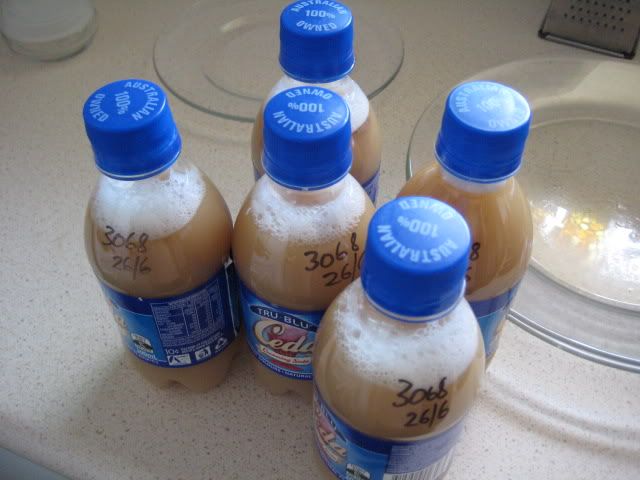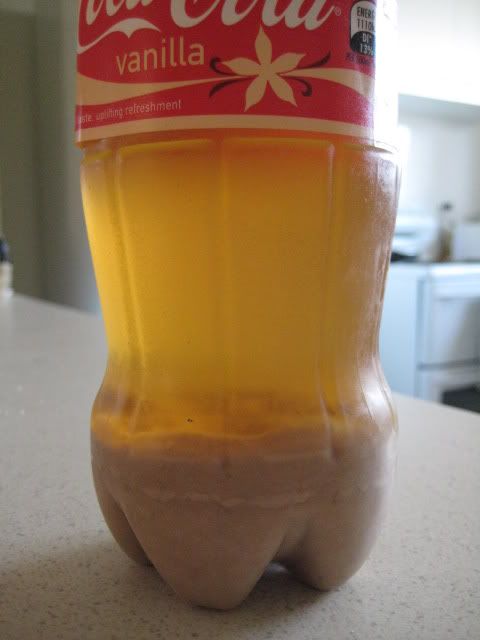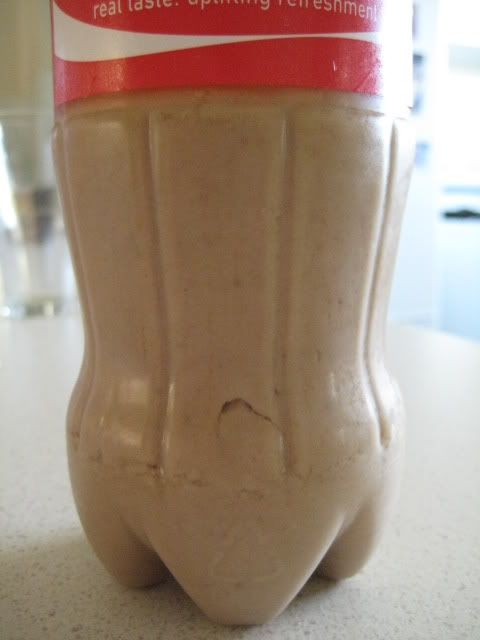Nick JD
Blah Blah Blah
- Joined
- 4/11/08
- Messages
- 7,322
- Reaction score
- 456
Hey folks,
Some people were asking about bottling the trub instead of chucking it down the plug hole last week and I just took a photo so I thought I'd bung it online.
I know this technique is done by many people and it's common knowledge, but I think it might be useful to those out there who are advancing their brewing but still not buying the perfect yeast for their recipe because of the astounding price of Wyeast packs. This way, you can get 6 brews from one pack of yeast and only ever go to second generation - it's actually cheaper than buying dried yeasts.
Most will know that you can pitch a cup (250ml) of slurry from one brew straight into the next. This gives you a fairly good pitching rate, and your yeast hit the ground running. This method is basically the same, but instead of pitching that cup of slurry ... you bottle it.
When the last bottle has been filled from the fermenter and there's about 500ml of beer on top of, say 1L of trub the fermenter is gently swirled. This is done until when you lean the fermenter on an angle, the bottom is clean where there's no liquid and the trub/beer is mixed throughly.
Then 5, 300ml PET bottles (I use cheap supermarket dozens) are meticulously cleaned and sanitized and the fermenter is tilted and each one filled with what looks a lot like baby diarrhea.

The yeast type and the date is written on them and they are stored. I store them in the fridge, but you could store them in a cool, dark place if fridge space is an issue.
I used them generally within 6 months by simply letting them come up to the temperature of the brew, opening and pouring off the beer (and tasting it just to be sure), then swirling the container and pouring it straight into the new brew. Fermentation usually starts quicker than with dry yeast.
Under $2 per brew for commercial-grade yeast is nice. :icon_cheers: I've made the same recipe two times in a row, the first with virgin yeast and the second with a PET full and back to back there was no difference.
Some people were asking about bottling the trub instead of chucking it down the plug hole last week and I just took a photo so I thought I'd bung it online.
I know this technique is done by many people and it's common knowledge, but I think it might be useful to those out there who are advancing their brewing but still not buying the perfect yeast for their recipe because of the astounding price of Wyeast packs. This way, you can get 6 brews from one pack of yeast and only ever go to second generation - it's actually cheaper than buying dried yeasts.
Most will know that you can pitch a cup (250ml) of slurry from one brew straight into the next. This gives you a fairly good pitching rate, and your yeast hit the ground running. This method is basically the same, but instead of pitching that cup of slurry ... you bottle it.
When the last bottle has been filled from the fermenter and there's about 500ml of beer on top of, say 1L of trub the fermenter is gently swirled. This is done until when you lean the fermenter on an angle, the bottom is clean where there's no liquid and the trub/beer is mixed throughly.
Then 5, 300ml PET bottles (I use cheap supermarket dozens) are meticulously cleaned and sanitized and the fermenter is tilted and each one filled with what looks a lot like baby diarrhea.

The yeast type and the date is written on them and they are stored. I store them in the fridge, but you could store them in a cool, dark place if fridge space is an issue.
I used them generally within 6 months by simply letting them come up to the temperature of the brew, opening and pouring off the beer (and tasting it just to be sure), then swirling the container and pouring it straight into the new brew. Fermentation usually starts quicker than with dry yeast.
Under $2 per brew for commercial-grade yeast is nice. :icon_cheers: I've made the same recipe two times in a row, the first with virgin yeast and the second with a PET full and back to back there was no difference.






